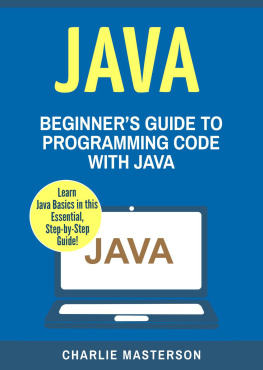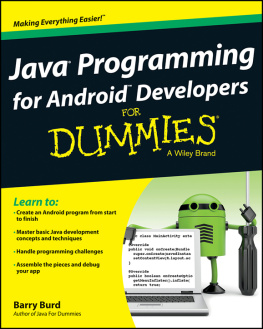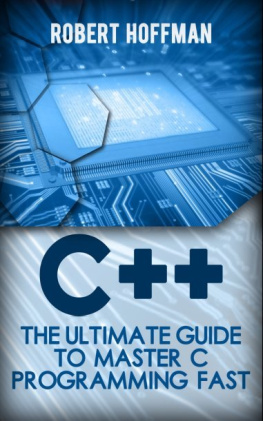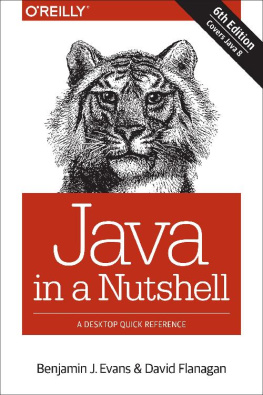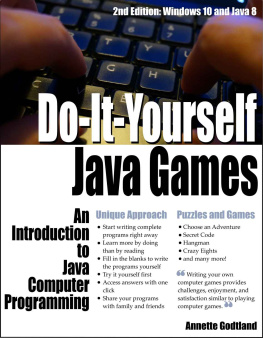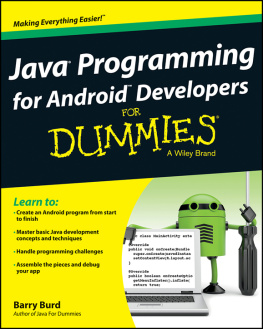coll. - Java: Java Crash Course - The Complete Beginner’s Course to Learn Java Programming in 20 Simple Lessons
Here you can read online coll. - Java: Java Crash Course - The Complete Beginner’s Course to Learn Java Programming in 20 Simple Lessons full text of the book (entire story) in english for free. Download pdf and epub, get meaning, cover and reviews about this ebook. year: 2016, publisher: Alphy Books, genre: Computer. Description of the work, (preface) as well as reviews are available. Best literature library LitArk.com created for fans of good reading and offers a wide selection of genres:
Romance novel
Science fiction
Adventure
Detective
Science
History
Home and family
Prose
Art
Politics
Computer
Non-fiction
Religion
Business
Children
Humor
Choose a favorite category and find really read worthwhile books. Enjoy immersion in the world of imagination, feel the emotions of the characters or learn something new for yourself, make an fascinating discovery.

Java: Java Crash Course - The Complete Beginner’s Course to Learn Java Programming in 20 Simple Lessons: summary, description and annotation
We offer to read an annotation, description, summary or preface (depends on what the author of the book "Java: Java Crash Course - The Complete Beginner’s Course to Learn Java Programming in 20 Simple Lessons" wrote himself). If you haven't found the necessary information about the book — write in the comments, we will try to find it.
Java: Java Crash Course - The Complete Beginner’s Course to Learn Java Programming in 20 Simple Lessons — read online for free the complete book (whole text) full work
Below is the text of the book, divided by pages. System saving the place of the last page read, allows you to conveniently read the book "Java: Java Crash Course - The Complete Beginner’s Course to Learn Java Programming in 20 Simple Lessons" online for free, without having to search again every time where you left off. Put a bookmark, and you can go to the page where you finished reading at any time.
Font size:
Interval:
Bookmark:
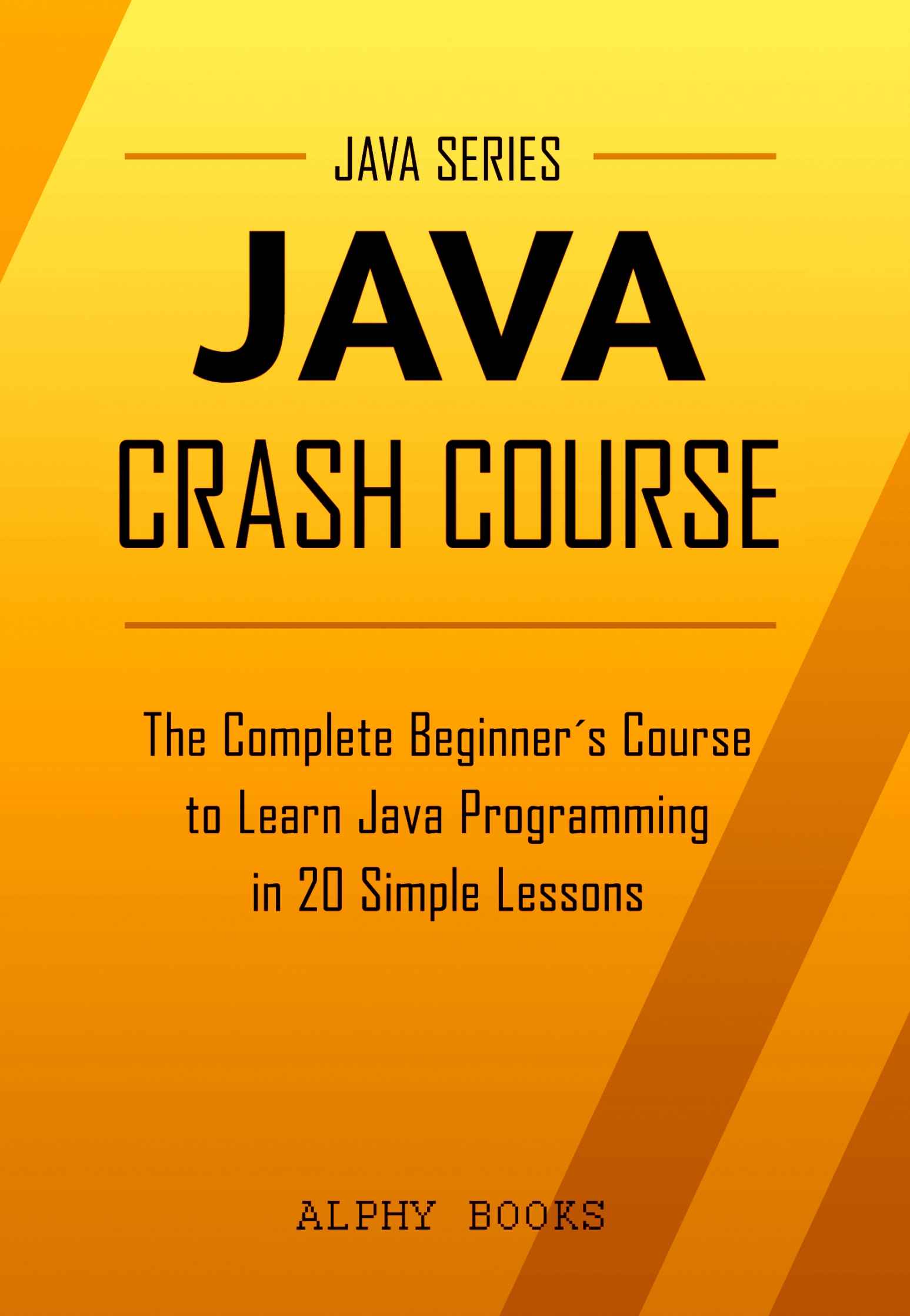
This book is an introduction to programming using Java. Well focus on breadth rather than depth. The goal is to be able to do something interesting as quickly as possible. Well start out with fairly detailed explanations because its important to have a thorough understanding of the basics, but as we go on, well have to leave a lot of stuff out. Some of the topics could have an equally long guide themselves. You dont need to understand all aspects of everything you read; what you should retain is knowledge that a particular capability exists and what it is called so that you can look it up when you need it.
This is what most programmers do. The first few sections of the book are fairly self-contained with simple examples. You should certainly not read them without typing them into the interpreter; youll get even more out of the tutorial if you experiment with extending the examples yourself. The remainder of the tutorial is structured around building a program that does something interesting. This will allow us to touch on many aspects of programming that are necessary to write real world programs: reading and writing to disk; error handling; code organization into classes, modules, and packages; regular expressions; and user input. Well also touch on some general principles in programming, such as clarity and efficiency.
Let's get started! Alphy Books
Java was built as an exclusively object-oriented programming languagewhich doesnt mean much right now, but will later in this guide. For now, suffice it to say that object-oriented programming allows for the creation of efficient, organized, and powerful code. Simply put, Java is a multithreaded, object-oriented, platform-independent programming language. This means that Java programs can perform multiple tasks using object-oriented concepts that can work across all platforms and operating systems. It is the most important factor distinguishing Java from other languages. Java helps us to develop normal desktop applications, mobile applications, and web applications through the use of separate packages such as the J2ME package for mobile application development and the J2EE package for web application development.
In this guide, we are going to learn the basics of object-oriented concepts as they apply to Java programming. We have two different types of application development concepts in Java: console-based application and GUI application development. Lets see how to develop these types of applications using Java.
Javas combined simplicity and power makes it different from other programming languages. Java is simple in that it doesnt expect too much from the user in terms of memory management or dealing with a vast and complex hive of intricate classes extending from each other. Although this doesnt make much sense right now, it will once we start learning about inheritance in Java. A Java program is run through a Java Virtual Machine (JVM), which is essentially a software implementation of an operating system that is used to execute Java programs. The compiler (process of converting code into readable instructions for the computer) analyzes the Java code and converts it into byte code, which then allows the computer to understand the instructions issued by the programmer and execute them in the appropriate manner. The distribution of the Java platform comes in two packages: the Java Runtime Environment (JRE) and the Java Development Kit (JDK).
The JRE is essentially the Java Virtual Machine (JVM) that runs Java programs. The JDK, on the other hand, is a fully featured software development kit that includes the JRE, compilers, tools, etc. A casual user who only wants to run Java programs on their machine would only need to install the JRE, as it contains the JVM that allows Java programs to be executed. However, a Java programmer must download the JDK. We will explore these concepts in greater detail in the next part. As previously stated, Java programming creates an object-oriented and platform-independent program because the Java compiler creates a .class file instead of an .exe file.
This .class file is an intermediate file that has byte code, and this is the reason why Java programs are platform independent. However, there are also disadvantages: Java programs take more time to complete their execution because the .class file must first load in the JVM before they are able to run in the OS. We can develop all kinds of applications using Java, but we need to use separate packages for separate application developments. For example, if you want develop a desktop application, then you need to use JDK; if you want to develop an Android application, then you need to use Android SDK, because they have different sets of classes.
Font size:
Interval:
Bookmark:
Similar books «Java: Java Crash Course - The Complete Beginner’s Course to Learn Java Programming in 20 Simple Lessons»
Look at similar books to Java: Java Crash Course - The Complete Beginner’s Course to Learn Java Programming in 20 Simple Lessons. We have selected literature similar in name and meaning in the hope of providing readers with more options to find new, interesting, not yet read works.
Discussion, reviews of the book Java: Java Crash Course - The Complete Beginner’s Course to Learn Java Programming in 20 Simple Lessons and just readers' own opinions. Leave your comments, write what you think about the work, its meaning or the main characters. Specify what exactly you liked and what you didn't like, and why you think so.







